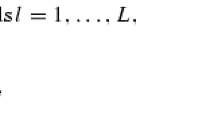Abstract
Existing solutions to the problem of coexistence of money and higher-return substitutes that rely on imperfect recognizability of the substitutes adopt extreme assumptions: they either have a zero cost of counterfeiting the substitutes or omit plausible refinements that would rule out pooling equilibria. Here coexistence is obtained with a general distribution of positive counterfeiting costs within a signaling-game framework in which the intuitive criterion is invoked. Moreover, if the cost of counterfeiting is small, then any monetary equilibrium that satisfies the intuitive criterion necessarily exhibits coexistence. A continuity assumption on off-equilibrium beliefs is also considered. It is satisfied by equilibria with small use of substitutes, but not by cash-in-advance equilibria.
Similar content being viewed by others
References
Aiyagari S.R.: Gresham’s law in a lemons market for assets. Can J Econ 22(3), 686–697 (1989)
Alchian A.: Why money?. J Money Credit Banking 9(1), 133–140 (1977)
Banerjee A., Maskin E.: A Walrasian theory of barter and exchange. Q J Econ 111(4), 955–1005 (1996)
Battigalli P., Siniscalchi M.: Strong belief and forward induction reasoning. J Econ Theory 106, 356–391 (2002)
Billingsley P.: Probability and Measure, 3rd edn. Wiley, New York (1995)
Cho I., Kreps D.: Signaling games and stable equilibria. Q J Econ 102(2), 179–222 (1987)
Freeman S.: Transactions costs and the optimal quantity of money. J Polit Econ 93(1), 146–157 (1985)
Hicks J.: A suggestion for simplifying the theory of money. Econ New Ser 2, 1–19 (1935)
In, Y., Wright, J.: Signaling Private Choices. http://profile.nus.edu.sg/fass/ecsjkdw/ (2011)
Jevons W.: Money and the Mechanism of Exchange. Appleton, London (1875)
Lester, B., Postlewaite, A., Wright, R.: Information and liquidity. J Money Credit Banking (2010, forthcoming)
Li, Y.-T., Rocheteau, G.: Liquidity Constraints. http://www.grocheteau.com/ (2009)
Lagos R., Wright R.: A unified framework for monetary theory and policy analysis. J Polit Econ 113, 463–484 (2005)
Mailath G., Okuno-Fujiwara M., Postlewaite A.: Belief-based refinements in signaling games. J Econ Theory 60, 241–276 (1993)
Nosal E., Wallace N.: A model of (the threat of) counterfeiting. J Monet Econ 54, 994–1001 (2007)
Podczeck, K., Puzzello, D.: Independent random matching. Econ Theory (2010, forthcoming). doi:10.1007/s00199-010-0584-4
Ramey G.: D1 signaling equilibria with multiple signals and a continuum of types. J Econ Theory 69, 508–531 (1996)
Zhu T.: Existence of a monetary steady state in a matching model: divisible money. J Econ Theory 123, 135–160 (2005)
Zhu T., Wallace N.: Pairwise trade and coexistence of money and higher-return assets. J Econ Theory 133, 524–535 (2007)
Author information
Authors and Affiliations
Corresponding author
Additional information
I am very grateful to Neil Wallace for his guidance and support. I am also indebted to Guillaume Rocheteau for useful comments to improve the paper. I appreciate comments from participants in the Summer Workshop on Money, Banking, Payments and Finance, Federal Reserve Bank of Chicago, summer 2009.
Rights and permissions
About this article
Cite this article
Hu, TW. Imperfect recognizability and coexistence of money and higher-return assets. Econ Theory 53, 111–138 (2013). https://doi.org/10.1007/s00199-011-0687-6
Received:
Accepted:
Published:
Issue Date:
DOI: https://doi.org/10.1007/s00199-011-0687-6




